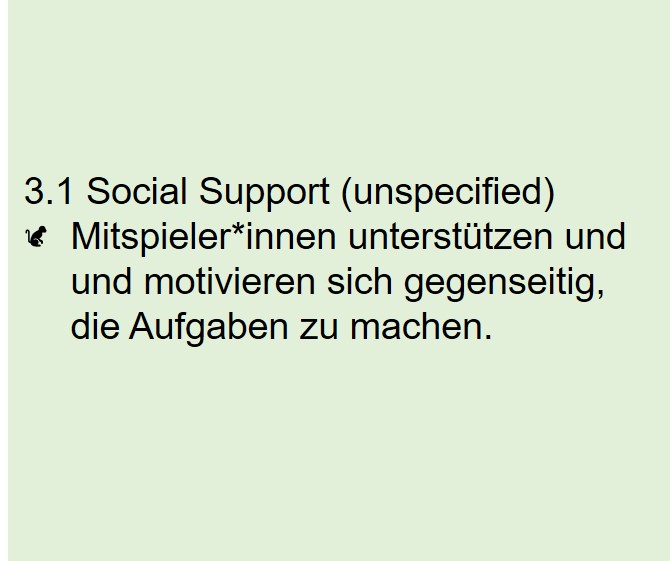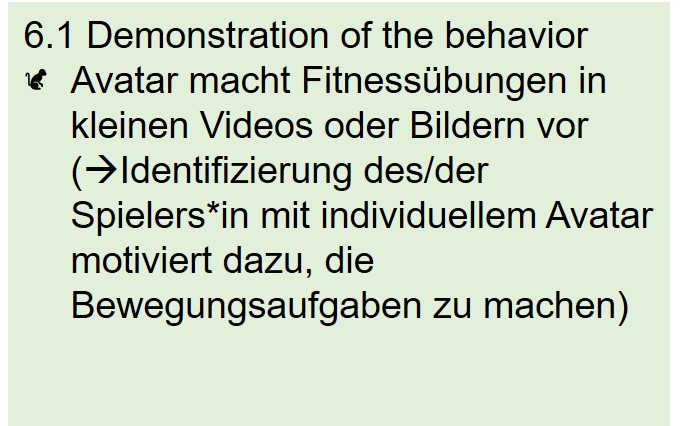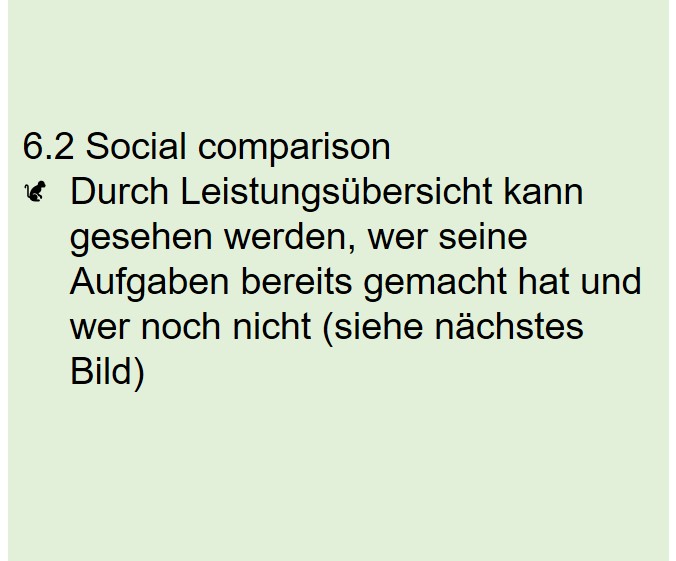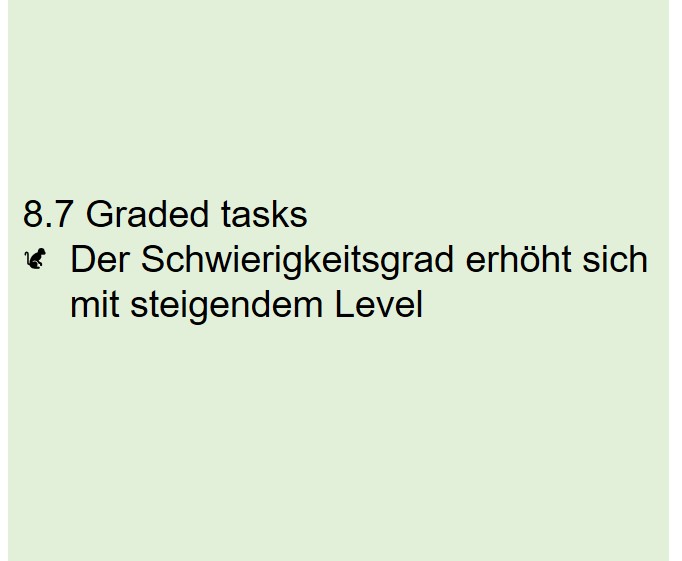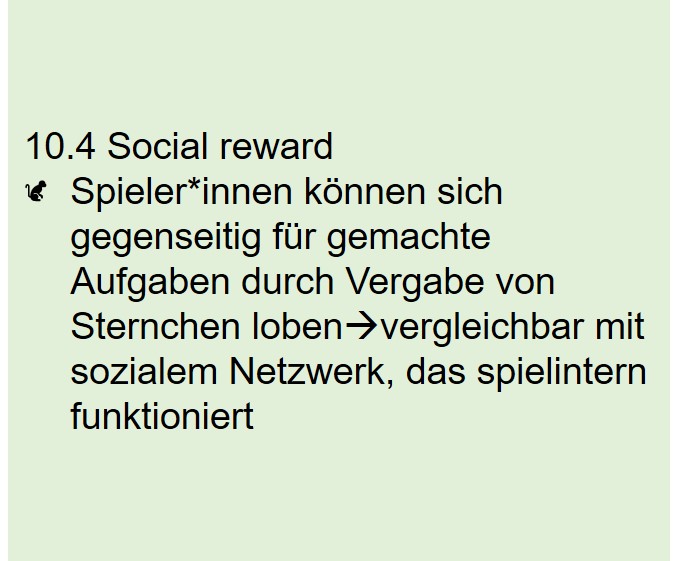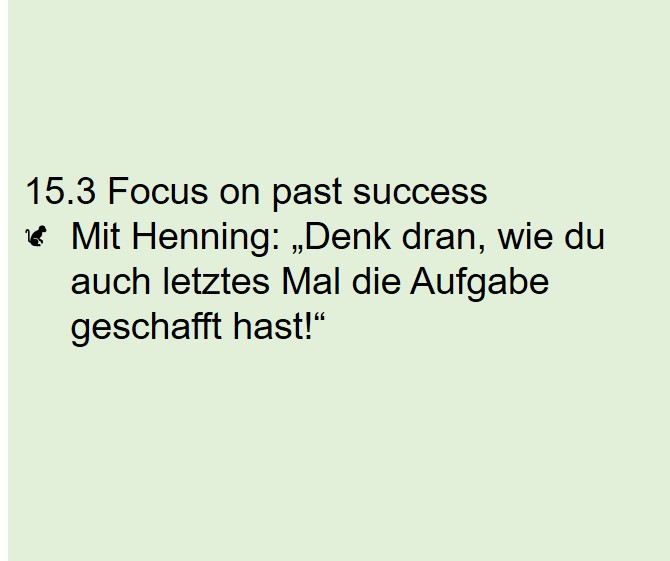A team of explorers sets out in search of the legendary gold city of El Dorado. In the jungle, a thunderstorm surprises the troop and destroys their camp. It quickly becomes clear that they will not be able to find El Dorado without help. With the help of a monkey that accompanies the group, tasks are solved to fight their way to the city of gold. Finding snippets of a lost map, covering distances through the threatening jungle or building a raft from rotten wood to cross a raging river are just some of the challenges the fearless explorers have to face. Here not only astuteness is demanded, but full body employment.
In the following, we would like to discuss how an adventure game that is played via an app during leisure time can lead to more exercise for students in everyday life.
Target group and target behavior:
Our game is suitable for 5th to 8th grade students living in Germany. We chose this target group because overweight and obesity in childhood and adolescence are on the rise worldwide, according to the paper Overweight and Obesity in Childhood and Adolescence: Is Prevention Possible? by Graf et. al. (2006, p. 507). El Dorado aims to counteract sitting for hours at a time in school and prevent obesity. The goal is to increase physical activity and to give the players the impulse to increase their physical activity.
According to the paper Serious Game to Combat Childhood Obesity Using Kinect by Rodríguez-Dzib1 et. al. (2016), p. 140, play is the best way to learn. In an age where technology is a major draw to young people's attention, playing technical games can ensure that they not only learn quickly and enjoy playing, but also remember what they have learned.
Gao et. al. describe in their paper A meta-analysis of active video games on health outcomes among children and adolescents (2015), p. 789, that children and adolescents enjoy playing so-called "AVGs" (active video games). Because the fun factor is right, AVGs, to which we also count El Dorado, can thus counteract lazy behavior (Gao et. al., p. 791).
Persona:
The persona of our game is Hanna. In game discourse, a persona is an archetypal player for the target group. Conceiving this persona was important for us to develop El Dorado with respect to their props.
Hanna is 12 years old and attends the sixth grade of a high school in Konstanz. She and her clique use their smartphones whenever they can. They not only check Whatsapp and Facebook, but also play short games via app. Hanna then often reaches for unhealthy snacks. Both at school and in their free time, the four friends in the clique play on their smartphones almost the entire time, sitting around lazily. Due to the lack of exercise and all the "snacking," Hanna has put on quite a bit of weight and is now on the verge of being slightly overweight. Her school friend Hannes has also gained some weight and often feels tired. So for Hanna and her clique, the game El Dorado is an effective compensation to the school day and the long sitting adapted to their interests.
From our initial idea to the finished game concept:
The initial idea was based on the concept of Escape Rooms. Escape rooms are rooms in which people are trapped and have to solve certain tasks to get to the next room. The goal is to reach the exit. We combined this game principle with our narrative, which is based on the El Dorado saga. Instead of having individual rooms as in an Escape Room, in our game a level represents a "small Escape Room". In each level, players must complete fitness exercise-like movement tasks that provide clues to the cognitive puzzle of the corresponding level. Both types of tasks must be solved in order to unlock the next level. Grey marked voluntary additional tasks, which are accessible for all players, can facilitate the solving of the cognitive puzzle. However, the mentioned puzzles cannot be deciphered exclusively by additional tasks.
The saga of El Dorado
The legend refers to the desire of Spanish conquerors in Colombia to find a city of gold. The ambitious dream failed: El Dorado was never found despite the almost inexhaustible search and efforts. Originally, El Dorado means "the golden man". It refers to the inaugural ritual of the chiefs of the Muisca people, who jumped into Lake Guatavita covered in gold, thereby crossing the boundary between the spiritual and physical worlds. The act can be traced back to the people's creation myth. The story says that the light created by the creator Jiminagua fell on the surface of the sacred lake of the Muisca, from which the primordial mother Bashue and a boy rose. She married him and together they populated the earth on their journeys. In late adulthood, the primordial mother transformed herself and her companion into water serpents. Both returned to the sacred lake. Since then, the water surfaces of the lakes of the Muisca land have been considered by this same people as the entrance to the spiritual world.
Narrative, dispositive and player mode and principle.
Our narrative is as follows: The tent camp of a team of explorers in search of El Dorado is destroyed by a thunderstorm. Level by level, the group makes its way through the jungle in search of the golden city. The movement and cognition tasks embedded in the narrative context must be mastered in order to first find the key and then the entrance to El Dorado.

Both the level of difficulty and the time required increase steadily as the game progresses. Henning the monkey, the mascot of the research team, motivates the players and accompanies the adventure.
Central to this is cooperation. This is the only way to progress in the game, because everyone has to complete at least one movement task per level.
Two types of movement tasks can be distinguished. On the one hand, those that work with GPS and activated position/motion sensors at the same time, and on the other hand, those where the GPS is switched on first and then the sensors. Regardless of which movement task is involved, the player always changes the fixed position during the movement tasks. This is ensured by the GPS, which tracks sections to be covered while walking or running.
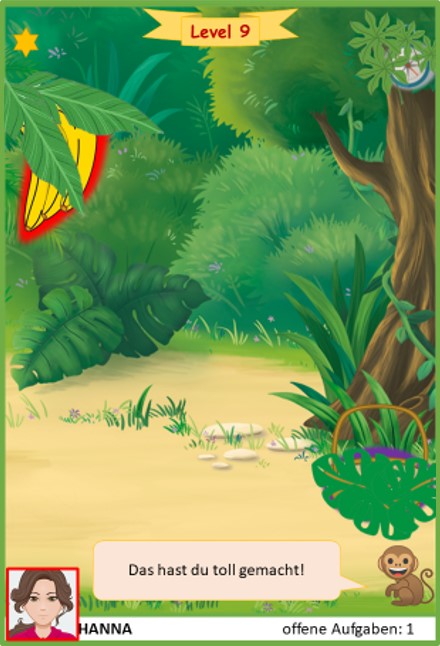
When opening the game for the first time, players can cosmetically design their own avatar (eye and hair color, hairstyle, skin color, standard outfit and shirt color). The color scheme indicates the personal tasks to be completed. In addition, additional cosmetic items such as hats can also be earned by solving additional tasks. This extended equipment is stored in a personal treasure chest. The avatar is also present in the game because it demonstrates the movement tasks in the form of instructions. Finally, the players most likely build up a certain identification with this character, which motivates them to play moving. Debbe Thompson writes in this regard in Designing Serious Video Games for Health Behavior Change: Current Status and Future Directions (2012), p. 808: "Since players often identify with their avatar, avatars may serve as powerful models [...]. Individuals have consciously performed physical activity when confronted with situations where their actions affected their avatar, especially when the avatar's appearance was similar to theirs."
After the avatar creation, the game continues with a prologue video, which shows the destroyed camp of the research group. Then the actual game starts: In the first level, the players have to rebuild the camp. Their movement tasks include chopping wood and moving vines out of the way with a machete. As mentioned above, the movement tasks can be designed in two variants. In practice, they might look like this: In the case of chopping wood, the players would first have to walk to a location 100 meters at a leisurely pace. Only the GPS is switched on. Once there, they would then have to make powerful arm movements reminiscent of chopping wood. The cell phone is held in the hand, only the sensors are switched on. In the second variant, cutting vines, walking is done simultaneously in addition to the swinging arm movements. GPS and sensors are activated at the same time.
In level nine, for example, the two variants are designed like this: The person must first walk 200 meters to a clue, for example a banana tree, with only the distance-measuring GPS turned on. Once at the tree, the bananas must then be "picked" with the sensors switched on alone. The instruction of Henning at this point would be accordingly: "Well done! Now pick 20 bananas in 30 seconds. The first 10 you pick with your left hand, the 10 more with your right." The fitness exercise-like task consists of moving the arm up and down, which is similar to lifting dumbbells.

Once each player has completed one or even more movement tasks for a level, the clues for the cognitive puzzle are displayed for everyone. For example, in the ninth level the cognitive task is to find a solution word of randomly arranged letters. The players have to put them in the right order to form a word.
Conclusion
The goal of the course "Games for Health", which took place in the summer semester 2019 at the University of Konstanz under the supervision of Dr. Laura König and Benjamin Schäfer, was to create a concept for a physical health-related game. We will now summarize the development process and the game concept from our group, which includes Jana Komor, Friederike Roelke, Elena Casacchia and Camila Stump, and try to draw a conclusion from this project.
El Dorado is designed for 5th to 8th grade students to counteract the hours of sitting in school and the resulting lack of exercise. The game is less suitable for children and adolescents who are already severely overweight, because the tasks are not aimed at reducing body weight. The narrative context is intended to provide excitement, variety and fun while playing. Central to El Dorado is teamwork, because everyone must solve at least one task for the group to progress. Once the tasks are solved, a puzzle of a cognitive nature is unlocked, which leads to the next level.
We ourselves would be curious to see how the implementation of the theoretical concept would be in a real game. Being able to play El Dorado would make us very happy.
Bibliography
Gao, Z., Chen, S., Pasco, D., & Pope, Z. (2015). A meta-analysis of active video games on health outcomes among children and adolescents. Obesity reviews, 16, 783-794.
Graf, C., Dordel, S., Tokarski, W., & Predel, H-G. (2006). Übergewicht und Adipositas im Kindes- und Jugendalter: Ist Prävention möglich?. Herz, 31, 507-513.
Rodriguez-Dzib, R., López-Martinez, J., 5 Chi-Pech, V., & Llanes-Castro, E. (2016). Serious Game to Combat Childhood Obesity Using Kinect. IJCSI International Journal of Computer Science Issues, 13(6), 136-141.
Thompson, Debbe: Designing Serious Video Games for Health Behavior Change: Current Status and Future Directions. In: Journal of Diabetes Science and Technology 4/2012, S. 807-811.
Bildquellen
www.kissclipart.com/dschungel-comic-clipart-jungle-comics-artist-5hsff0/(04.07.2019).
de.pngtree.com/freepng/cartoon-banana_2520707.html(04.07.2019).
pixabay.com/de/illustrations/korb-clipart-cartoon-kiste-3318480/(04.07.2019).
emojiterra.com/de/affe/(04.07.2019).
https://www.love-beauty.cc/vector/19193.html(04.07.2019).
http://www.pngline.com/i/blatt%20clipart/https://de.pngtree.com/free-png-vectors/cartoon--schatzkiste(04.07.2019).
de.vecteezy.com/vektorkunst/193325-el-dorado-vektor-set(04.07.2019).
www.canstockphoto.de/clipart-vecteur/landschaftsbau.html(04.07.2019).
www.seekclipart.com/clipart/wxbixJ_zelt-clipart-png-download/ (04.07.2019).
The game concept for the health game "El Dorado" and this article were created by Friederike Roelcke, Jana Komor, Camila Stump and Elena Casacchia during the seminar "Games for Health" by Dr. Laura König (Psychology) and Benjamin Schäfer (Literature, Arts, Media Studies) in the summer semester 2019.

